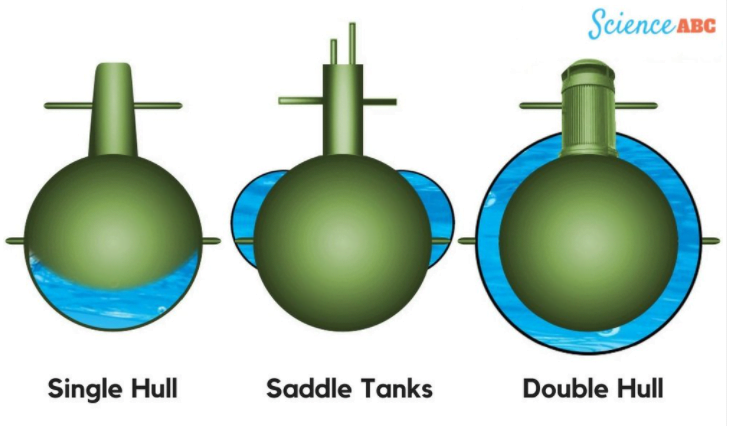Follow Us:

Share
Defense Feeds – If you have ever been snorkelling or scuba diving, you will know how extremely different life underwater is from life on land. It’s dark and hard to navigate, there’s no oxygen to breathe, and the intense water pressure makes everything feel claustrophobic and uncomfortable.

Submarines are ingenious pieces of engineering designed to transport humans securely through this dangerous environment. They are also meant to be unseen, undetected, invisible, silent force that could or could not be anywhere at any time. With these unique capabilities, these naval vessels are capable of propelling itself beneath the water as well as on the water’s surface.
Interestingly, have you ever wondered how does the submarine dive and resurface according to Archimedes principle? In today’s post, we will explain this topic in detail, and you will find the answer only at this post!
Submarine became the key element in naval warfare during World War I (1914-18) when Germany employed them to destroy surface merchant vessels.
During the attack, submarines employed their primary weapon, a self-propelled underwater missile known as a torpedo. Followed by world war II, they also performed a similar role on a bigger scale, capable of firing long-range nuclear missiles without surfacing and remaining underwater for months at a time.
In order to perform undersea, submarines need to function in agreement with the key laws of nature, including Archimedes’ Principle by manipulating the buoyancy.
A submarine can float when the mass of water that it displaces or pushes out of the way is equal to the mass of the boat. This displaced water causes an upward force called buoyancy.
Buoyancy acts in the opposite direction to gravity, which would pull the ship down. This allows a submarine to dive under the water or to come up to the surface.
In order to control the buoyant force acting on it, a submarine fills or empties itself with the surrounding water to dive or resurface. As the submarine consists of ballast tanks (and trim tanks, in some variants), they can be filled with water or air depending on the navigational needs.
It is important to note that messing with this force can have disastrous consequences. Therefore, the ability to control it can be extremely beneficial.

To be precise, the ideas can be illustrated as followed, submarines float on the surface by using ballast tanks full of air. There are valves at the top of the ballast tanks that are opened when it’s time for the submarine to submerge. As the air escapes, seawater seeps into the bottom of the tank.
It makes the submarine heavier before submerging. It requires four people on duty to drive the submarine whether on the surface or submerged. The helmsman and planesman are the front junior enlisted members. They use controls to adjust the rudder and dive planes to steer left and right and up and down.
The officer in charge is the diving officer who oversees their every action. The Chief of the Watch, a fourth member of the watch team, sits near the Ballast Control Panel (BCP) and operates it. The BCP is in charge of the ballasts, which submerge and surface the boat while also maintaining buoyancy and trim.
On the other hand, blowing to the surface is one way for a submarine to rise. To do so, seawater is replaced with high-pressure air blown into the ballast tanks. It’s the weight of the seawater that is keeping the sub underwater, so displacing it makes the sub rise to the surface.
Driving to the surface is another option. By directing them, the submarine can rise as it cruises. Once it reaches the surface, low-pressure air can force seawater out of the ballast tanks to keep it floating above the water.
The point to highlight is that using Archimedes’ Principle, it is clear that a change in mass of an object affects how much liquid has to be displaced. In submarines, this is controlled by the ballast tanks.
Share
Defense Feeds is publication focusing on informing, engaging, and empowering the world by providing accurate information from defense technology.
Powered by Defense Feeds © 2025 – All rights reserved.